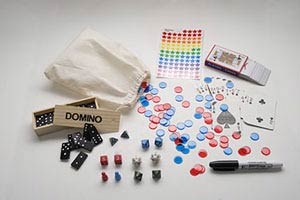Kindergarten Math Skills and Concepts
While every state and school district differs slightly, below you will find useful detail surrounding some of the Math concepts children will likely be covering in Kindergarten: Counting and Number Sense, Beginning Addition and Subtraction, Money, Place Value, Basic Patterns, Picture Graphs (pictographs), Telling Time, Measurement, Shapes and Solids, Symmetry, and Fractions. The Giggle Facts Math Program will not only help Kindergarten Students master their Addition and Subtraction Facts, but will also help kids with many other math concepts they will encounter in Kindergarten.
You may notice that many math concepts and math skills repeat over these four grade levels. This is due to the fact that math concepts build on each other grade by grade. Giggle Facts is designed for kids aged 4 to 8 and supports math learning, skills and concepts in Kindergarten, First Grade, 2nd Grade and 3rd Grade. It is a complete math program including Kindergarten math games and should also be played with children older than 8 if they need help “catching up” or mastering Math Facts.
Counting & Number Sense
Kindergarten students will work on one-to-one correspondence (see Glossary), learn about ordinal numbers (First, Second, Third, Fourth, etc.), learn to count by 1s, and may even begin learning to skip count by numbers like 2s, 5s, and 10s (ex: 2,4, 6, 8, or 5, 10, 15, 20). Frequently, a Hundreds Board and/or number line is used to visually represent these Kindergarten math concepts, and to assist students in learning these math skills. Read our blog for advice on how to teach your child skip counting by 5’s. Giggle Facts teaches children the relationship between numbers (Number Sense), which in turn helps with math concepts such as skip counting, greater than / less than, before / after, odd and even numbers, etc.

Beginning Addition and Subtraction
Addition and Subtraction Math Facts may be introduced in Kindergarten. Students may be introduced to Addition as the concept of “adding on” to another number, and they may even encounter Addition strategies such as “Doubles” (6+6 or 4+4) and “Turnarounds” (2+1 = 3, so 1+2 = 3). They may also be introduced to Subtraction, learning the concept of Subtraction as “taking away”. Students will likely begin inventing simple number stories using Addition and Subtraction (ex: Tom has 4 apples. He picks 2 more from the tree. How many apples does Tom have now?).
Children may begin to practice some simple Math Facts in the classroom, however, children will certainly benefit from practicing more at home, to begin learning and retaining Math Facts at this earlier stage. The Giggle FactsTM program begins at this early stage of math learning. Since instant recall of Math Facts is imperative to learning higher-level math concepts (see Research), it is beneficial to begin practicing and learning Math Facts in Kindergarten. Giggle FactsTM is a perfect way to play while learning Addition and Subtraction Facts, without relying solely on tedious flashcards. The Math Program includes the frequent use of playing cards, dominoes, and multi-sided dice to make learning fun and to make the math games engaging for children.
Money
Kindergarteners will identify the names and values of pennies, nickels, and dimes, and perhaps begin counting small numbers of coins. Children who have begun learning Addition and Subtraction Facts will, overall, have an easier time adding / counting money. Giggle FactsTM allows children to develop their number sense that will help them make connections between Math Facts and skip counting with money.
Place Value
Each digit in larger numbers has a value, depending on its position in the number. For example, in the number 78, the 7 is worth 7 “tens” (or 70), and the 8 is worth 8 “ones”, or simply 8. Kindergarteners will begin breaking numbers from 10 to 20 into “tens” and “ones” as an introduction to Place Value.
Giggle FactsTM teaches students to break down larger numbers into their smaller components (tens and ones) through 2 different strategies. There is an Addition strategy named “Teens”, and a Subtraction strategy named “More Teens” in the Giggle FactsTM program that supports the concept of Place Value.
Basic Patterns
Students will identify basic patterns using colors, shapes and numbers (ex: red, blue, red, blue or 2,4,2,4) in kindergarden.
Picture Graphs (Pictographs)
Children in Kindergarten may do simple surveys such as finding out their classmates’ “Favorite Season”. This information might be represented using a Pictograph, where each season would have a different picture representing it (ex: Spring: umbrella, Summer: sunshine, Fall: leaves, Winter: snowflake). The kindergarten students would place a picture of their favorite season on a graph, creating a giant picture graph or pictograph of the class data.
Telling Time
Learning to tell time is an important math skill that students begin to work on in Kindergarten. Children will learn about the concept of time (morning, afternoon, days, weeks, years), and they may learn to tell time to the hour and half-hour.
Measurement
Kindergarteners will have many opportunities to measure in a variety of ways. Kindergarten students will compare various lengths, weights and temperatures. The children may also have the opportunity to do some measuring using non-standard units (ex: hand spans), and using calendars, etc.
Shapes and Solids
Kindergarden students will learn to identify and describe 2-dimensional shapes such as circles, triangles, squares, and rectangles. They may look at simple 3-D solids such as cubes.
Symmetry
Kindergarten students may have opportunities to look for symmetry in everyday objects. An image that is symmetrical is something that has two sides that are identical. One side could be seen as a “mirror image” of the other side.
Fractions
Kindergarten students will possibly investigate fractional parts of a whole as part of the math curriculum (ex: the child will divide shapes into equal parts like halves, thirds, or fourths).
